![]()
Experience Pneuma Of Self-Realization ('Rebirth' or 'Born Again' Of Spirit)
The Paraclete: “Every religion has talked about our second birth.”“The pneuma [Cool Breeze or Wind] is the peculiar power ... of eternal life.”
“At the end of history Spirit of God will become effective in a special way.”
“However, in the new age, the Spirit rests on all followers of the Messiah.”
“Resurrection "comes about through Yahweh's ruach"”
Day His Spirit (Ruach) is poured will coincide with day of Messiah
Return of Jews to Israel “will occur right before the return of the Messiah”
Quran explicitly refers return of Jews to Israel before Last Judgment
Az-Zukhruf 43:61: “He [Jesus] is a Sign of the Hour [of Resurrection].”
Two Messiahs - Jewish Scripture is a key to understanding Jesus
“The Jewish wait for the Messiah is not in vain.”
“Energy is that mysterious power that is active; Spirit is the primal energy, the power of being, that infuses and enlivens all beings. It is also the distinctive essence of being human. In people, the Spirit unites the power of being (or life) with the meaning of being. What happens when Divine Spirit dwells within or pours out upon human spirit? Something happens that cannot be wholly explained; people experience an empowerment and an energy by an unknown strength.” (Kim 2011, 61)
“Motherhood of the Spirit and the rebirth is a significant theme in the theology of Moltmann... interprets the experience of rebirth and divine comfort as revealing the femininity of the Spirit. Moltmann writes that, "If believers are 'born' again from the Holy Spirit, then the Spirit is 'The Mother' of God's children and can in this sense also be termed a 'feminine' Spirit. If the Holy Spirit is 'the comforter' (Paraclete), it comforts 'as a mother comforts.' In this sense, it is the Motherly comforter of believers.” (Varkey 2011, Kindle 4165)
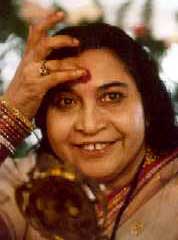
“But those who have got Realization ('second birth') will enter into the Kingdom of God. You have to enter into the Kingdom of God here (while on Earth i.e. pre-Resurrection), as I say, in the Seventh Chakra.” (Follow #16-18)
“Just people talk of baptism, 'Come along I'll baptize you.' It's not possible that way. It's just an artificial ritual. Try to understand. This is not going to render that actual happening within you which is going to make you grow spiritually. So the actualization of baptism (kundalini awakening) takes place and you can feel also from your fontanel bone area a kind of a Cool Breeze (Ruach) of the Holy Ghost coming in.” (Follow #16-18)
“Actual baptism (kundalini awakening) is when this Holy Ghost (Mother Kundalini) rises and you start really feeling the Cool Breeze (Ruach) on top of your head. This is a miracle. It is!”
The Paraclete Shri Mataji
“Furthermore, since the Spirit can be considered as feminine, this would counterbalance an exclusively masculine understanding of God. Finally, since the Spirit endows us with wisdom and imparts us with knowledge, an appreciation of the Spirit can also lead to a renewed dialogue between theology and the sciences, a dialogue in which both partners are in search for truth. These few examples show that a discernment of the Spirit is not a dead issue of a past age but is much needed in theology today to find responsible answers to humanity's pressing needs.”
Prof. Dr. Hans Schwarz, University of Regensburg, Germany.
“It is this claim of access to new teaching that becomes problematic within the Johannine communities.”
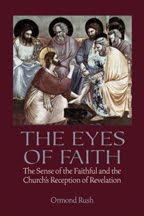
THE HOLY SPIRIT AND REVELATION
“Lumen Gentium 12 teaches that all believers possess "a supernatural sense of the faith" which enables an infallibility in believing. This supernatural sense of the faith is "aroused and sustained by the Spirit of truth.” A theology of the sensus fidelium must begin by attending to the role of the Holy Spirit in divine revelation. It is central to the belief of Christians that God is fully encountered in Jesus Christ, the Crucified and risen one; that salvation from God is mediated through him; and that, within that salvific encounter, God is revealed to humanity. What is the role of the Holy Spirit in that process of revelation? How might a trinitarian theology of revelation be constructed that gives appropriate emphasis to that role?
In this chapter, we begin our exploration of the sensus fidelium by firstly highlighting the witness of Scripture to the enlightening role of the Holy Spirit, as but one of the many interrelated dimensions of the Spirit's assistance in empowering Christians to appropriate the salvation Jesus Christ offers. This chapter therefore does not attempt a comprehensive exploration of the role of the holy spirit in the Christian life. After examining the scriptural witness to this Christian experience of enlightenment by the Spirit in the economy of salvation, this chapter then proposes a trinitarian theology of revelation in which the Holy Spirit is seen to be "the principle of reception" in the process of divine revelation.
THE EXPERIENCE OF THE HOLY SPIRIT
Jesus was being interpreted from the moment his public ministry began, yet being misinterpreted. The four Gospels consistently preserve the memory that, during his ministry, the earliest disciples misunderstand Jesus. This misunderstanding is later corrected by three decisive "events": Jesus' death on the cross, his resurrection from the dead, and the early disciples' experience, after the resurrection, of being given an ability to understand aright the meaning of Jesus' teaching and ministry, of his death and resurrection, and of his identity as God's bearer of salvation. In this section, it is this gift of an ability to understand Jesus that I particularly wish to focus on, without wanting to reduce the Spirit's work to a purely cognitive dimension....
According to Johannine pneumatology, Jesus promises another Paraclete, the spirit of Truth who will enable the community to understand the meaning of Jesus. Helmut Gabel neatly summarizes the Johannine vision:
In the view of the Gospel of John, the word of the eye-witnesses of Jesus and that of the future disciples is work of the spirit. The entire tradition process is a process enabled by the Spirit. The spirit is, as it were, the "interpreter" of Jesus, who leads to the true understanding of the Christ event and reveals the event in its deepest sense.
The Johannine vision can be outlined in four points. Firstly, the Johannine literature emphasizes that the Spirit/Paraclete is given to all individuals in the community.
Secondly, Jesus promises another Paraclete who will take the place of Jesus; nevertheless, although the Spirit/Paraclete takes the place of Jesus, the Spirit/Paraclete does not supplant or negate Jesus. The "secessionists," according to the author of 1 John, are wanting to give independent authority to the Spirit over against Jesus, thereby serving the necessary element of continuity with Jesus. The Johannine literature emphasizes that it is the role of this Spirit/Paraclete to ensure continuity with Jesus. A phrase recurs: "from the beginning.” The Spirit ensures continuity with the pre-Easter Jesus.
Thirdly, the Johannine literature emphasizes that it is the role of this Spirit/Paraclete, not only to ensure continuity with Jesus, but also to enable the community to interpret the word of Jesus for a new context, ensuring faithful adaptation and innovation.
Fourthly, the Johannine literature emphasizes that it is the role of this Spirit/Paraclete to indeed further the teaching of Jesus beyond what Jesus was able to teach, speaking a new word of the glorified Jesus...
The Fourth Gospel portrays Jesus giving his disciples the assurance that the Spirit/Paraclete will, in the future, be the teaching voice of Jesus himself.
I have said these things to you while I am still with you. But the advocate, the holy spirit, whom the father will send in my name, will teach you everything, and remind you of all that I have said to you.
The spirit/Paraclete will bring the past to memory, but the Spirit/Paraclete will be the voice of the glorified Jesus teaching in new situations in the present. However, this new teaching will be anchored in the Jesus of the past, because the Spirit/Paraclete will be speaking anew on behalf of the glorified Jesus.
It is this claim of access to new teaching that becomes problematic within the Johannine communities. The controversy lurking behind the themes of the first epistle is the divergent reception of the fourth Gospel. The author claims that the group emphasizing its pneumatic authority and an access to the new teaching of the glorified Jesus is losing its grounding in the tradition and the teaching of the pre-Easter Jesus. Thus there is a tension within the communities between those emphasizing the tradition (anamnesis) and those emphasizing the creative voice of the glorified Jesus going beyond the teaching he had given before the resurrection (inspiration). The writer of the epistle claims that both anamnesis and inspiration are demanded. It is a tension that will mark the history of the Spirit not only throughout the Johannine communities, but throughout the history of the church.” [emphasis ours]
Ormond Rush, The Eyes of Faith
The Catholic University of America Press (March 11, 2009) pp. 16-21
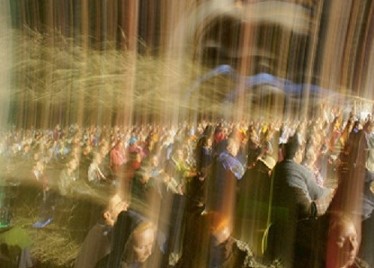
JUDAISM: “In the scripture of the Old Testament, a ruach or spirit of God was personified in prophetic tradition as the Spirit of God or the Spirit of Prophecy... She is the immanent aspect of Godhead that interacts with those who seek her.” (Keizer 2010, 42)
CHRISTIANITY: “Even this brief survey of usage makes it clear that the concept ruach was from the beginning an existential term. At its heart was the experience of a mysterious, awesome power-the mighty invisible force of the wind, the power of vitality, the otherly power that transforms-all ruach, all manifestations of divine energy. The same association of the divine ruach with numinous experience is implicit in the fact that ruach denotes the cosmic and inescapable presence of God in Psalm 139:7. It was hope for a far richer experience of God's vitalizing presence and activity within Israel that lay at the heart of the prophets' expectation for the age to come (Ezek. 36:26-27;37).” (Welker 2006, 7)
ISLAM: “The spiritual baptism is the direct work of God Himself. As a fuller or a laundress washes the linen or any object with water; as a dyer tints the wool or cotton with a tincture to give it a new hue, so does God Almighty baptize, not the body but the spirit and the soul of him whom He mercifully directs and guides unto the Holy Religion of Islam. This is the 'Sibghatu Allah,' the Baptism of Allah, which makes a person fit and dignified to become a citizen of the Kingdom of Allah and a member of His religion.” (Dawud 2006, 190)
Cool Breeze (Ruach): Feeling the Cool Breeze initially, and from then onward daily during meditation, is fundamental to Sahaja Yoga. This Cool Breeze is a numinous experience i.e., "having a strong religious or spiritual quality; indicating or suggesting the presence of a divinity.” Hundreds of thousands since the 1970s had this numinous experience at Shri Mataji's public programs. However very few, if any, returned to practise Sahaja Yoga. Unlike the Paraclete Shri Mataji since the 1970's till She passed away in 2011, the Sahaja Yoga organization has also never publicly admitted till today that the Cool Breeze is actually the Ruach or "pouring of His Spirit on all flesh" during the Resurrection.
As a result hundreds of thousands of seekers who felt the Cool Breeze over the decades were unconvinced by the standard and sanctioned subtle system, kundalni awakening, chakras opening energy explanation. The vast majority never came back. Judith Coney explains:
“Considerable time has been spent so far on exploring the experience of cool breezes in Sahaja Yoga. However, this is not necessarily because it is assumed that feeling a Cool Breeze is crucial to the decision to join Sahaja Yoga. In fact, as we have seen, comparatively few people who feel something actually do join, apparently unconvinced by the assurance of devotees that 'if you can feel it, it must be true'. Given the small number of people in 1994 who went to follow-up meetings after the Royal Albert Hall, it seems that even those who have fairly standard experiences of Cool Breeze are far more likely not to want to take the experience further than join.” (Judith 1999, 60)
“Cool breezes, then, are a central and prominent feature of most members' first encounter with Sahaja Yoga but do not, by themselves, usually precipitate the decision to join.” (Judith 1999, 62)
Judith Coney is a lecturer in the Department of Study of Religions at the School of Oriental and African Studies, University of London. She published her book in 1999 but refrained from admitting, or at the very least briefly mentioning, the academically contentious eschatological significance of the "Cool Breeze" experienced by hundreds of thousands. Needless to say, neither is there any mention of Paraclete, Resurrection nor Last Judgment. Just like Shri Mataji's disciples, Judith Coney too could not muster the courage to confirm that Shri Mataji is the Paraclete promised by Jesus to teach you, didasko (14:26), remind you, hypomimnesko (14:26), testify, martyro (15:26), prove wrong, elencho (16:8), guide into truth, hodego (16:13), speak, laleo (16:13), and declare, anangello (16:13-15)!
“But those who have got Realization ('second birth') will enter into the Kingdom of God. You have to enter into the Kingdom of God here, as I say, in the Seventh Chakra.” (Follow #16-18)
“Just people talk of baptism, 'Come along I'll baptize you.' It's not possible that way. It's just an artificial ritual. Try to understand. This is not going to render that actual happening within you which is going to make you grow spiritually. So the actualization of baptism (kundalini awakening) takes place and you can feel also from your fontanel bone area a kind of a cool breeze (Ruach) of the Holy Ghost coming in.” (Follow #16-18)
“Actual baptism (kundalini awakening) is when this Holy Ghost (Mother Kundalini) rises and you start really feeling the cool breeze (Ruach) on top of your head. This is a miracle. It is!”
The Paraclete Shri Mataji
“Furthermore, since the Spirit can be considered as feminine, this would counterbalance an exclusively masculine understanding of God. Finally, since the Spirit endows us with wisdom and imparts us with knowledge, an appreciation of the Spirit can also lead to a renewed dialogue between theology and the sciences, a dialogue in which both partners are in search for truth. These few examples show that a discernment of the Spirit is not a dead issue of a past age but is much needed in theology today to find responsible answers to humanity's pressing needs.”
Prof. Dr. Hans Schwarz, University of Regensburg, Germany.
You may download this pdf file which has instructions for self-baptism (Self-realization or kundalini awakening) and meditation. You may want to print this file and use it for regular meditation. Please follow these steps daily till you feel the cool breeze (Ruach) on your palms and top of your fontanalle. On rare occasions, if cool breeze (Ruach) cannot be felt even after a few weeks then it is advisable to go to a Sahaja Yoga center where Shri Mataji's disciples will clear any chakra blockages. This free, unconditional service fulfills a 2000-year promise of Spirit-rebirth by disciples of the Paraclete (as evidenced in photo below of Ruach activation): “Jesus solemnly assures the disciples that they will, in the future, perform even greater miracles than He. By this He means to say that through the power of the Holy Spirit, they will bring about the greatest miracle of all - the salvation of lost souls.”
“The experience of the Holy Spirit, as distinct from human forms of spiritualization and sublimation, is always a physical experience. The experience of the Spirit sets up the coming liberty of the whole creation and begins the completion and perfecting of the creation of human beings and of all things.” (Kim 2011, 52)
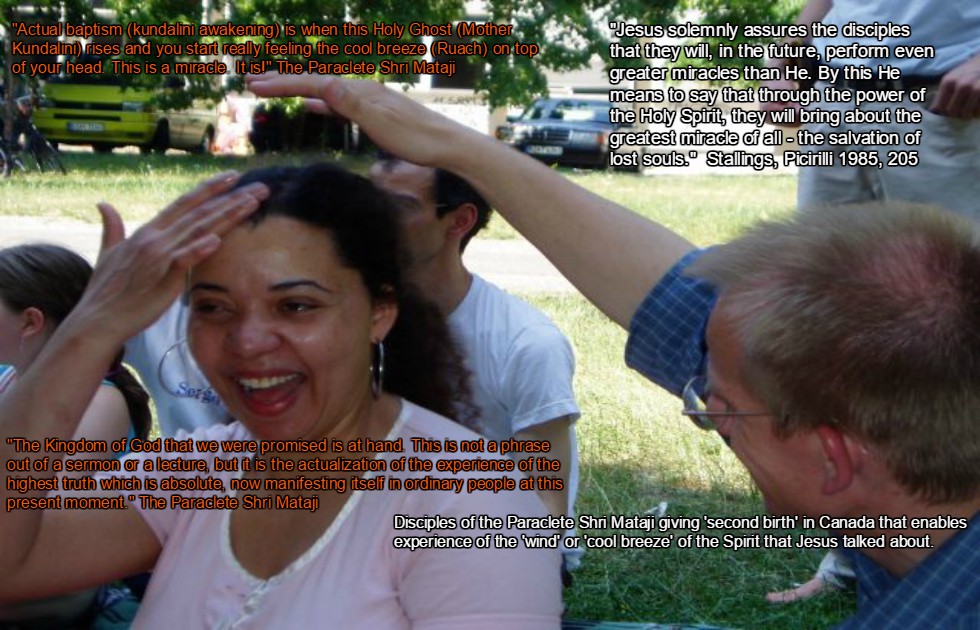
"Pneumatology—in this case the Christian theological sub-discipline devoted to the person and work of the Holy Spirit—is a deeply challenging field. Given the winds of Christian renewal sweeping across the globe today, perhaps no topic merits closer scrutiny and in turn has potential for wider application than this one within the field of Christian dogmatics. Despite this need, however, theologians, pastors, students, and laypeople continue to find themselves confused and frustrated with the topic. Easy, formulaic answers in pneumatology are simply unhelpful as circumstances and challenges unfold. Thoughtful, critical, and deeply earnest Christians continue to find the field puzzling, controversial, and maybe even unsettling. For these and other reasons, this book is needed, and if it can ameliorate this situation to some degree for some of its readers, it would have served its purpose. Feeling fountain of Breeze/Pneuma/Riah Al-Qiyamah/Prana/Vibrations/
Qi of the Spirit (Mother, Ruach, Tao, Kukulkan, Paraclete, al-Ruh) flowing out of the fontanelle for very first time. Verily, verily, it is the Fountain of Immortality! (Fontanelle comes from fontaine, French for "fountain.”)
“The thousand-petaled lotus at the top of the head, the Sahasrara Chakra is the final state of achievement in what we are calling universal bandwidth. Once we have reached a certain point in our development, the kundalini energy, divine mother, Shakti, the power of God, the holy spirit comes up the spine and instantly increases our bandwidth. We now understand, see, perceive, and participate in the universe in a new way.” (Farrand 2006, 64)
NOTE: All disciples of the Paraclete Shri Mataji, as promised by Jesus, are empowered to bring about the "second birth by Spirit" and trigger the cool breeze (Ruach, Pneuma, Prana, Chi, Wind) in others (as photo above demonstrates): “Jesus solemnly assures the disciples that they will, in the future, perform even greater miracles than He. By this He means to say that through the power of the Holy Spirit, they will bring about the greatest miracle of all - the salvation of lost souls. He promises them that whatever they ask for, in connection with their ministry of bringing the miracle of salvation to lost men, will be granted them.” (Stallings, Picirilli 1985, 205)
“The Holy Spirit: Breath of God... The interesting part of this is the Hebrew word for spirit is ruach, and it means 'air in motion.' It is the same word for 'breath.' It also means 'life.' By resemblance to breath and air in motion, it means 'spirit.' That's where we get the translation, and the Hebrew word contains all those different meanings. If we just leave it with our English word 'spirit,' we're not getting the full attributes of what the Bible is trying to describe. It's trying to describe that there's a breath involved. Let's take this into the New Testament because we have almost the same thing where Jesus is talking about the Holy Spirit. He says, 'That which is born of the flesh is flesh, and that which is born of the Spirit is spirit. Do not marvel that I said to you, 'You must be born again.' The wind blows where it wishes, and you hear the sound of it, but cannot tell where it comes from and where it goes. So is everyone who is born of the Spirit' (John 3:8). Jesus is talking about the Holy Spirit, and He's saying it is like wind. When you get into the Greek behind that, the Greek word is pneuma, which again means 'a current of air,' 'breath,' or a 'breeze,' and again by analogy, 'a spirit.' So both the Hebrew and the Greek word are talking about breath. It's talking about wind.” (G. Robertson, The Holy Spirit: Breath of God Jan. 27 2013)
COOL BREEZE (WIND) AND BEING BORN OF THE SPIRIT

Jesus and Nicodemus
John 3:1-8
1. Now there was a man of the Pharisees, named Nicodemus, a ruler of the Jews;
2. this man came to Jesus by night and said to Him, “Rabbi, we know that You have come from God as a teacher; for no one can do these signs that You do unless God is with him.”
3. Jesus answered and said to him, “Truly, truly, I say to you, unless one is born again he cannot see the kingdom of God.”
4. Nicodemus said to Him, “How can a man be born when he is old? He cannot enter a second time into his mother's womb and be born, can he?”
5. Jesus answered, “Truly, truly, I say to you, unless one is born of water and the Spirit he cannot enter into the kingdom of God.
6. “That which is born of the flesh is flesh, and that which is born of the Spirit is spirit.
7. “Do not be amazed that I said to you, 'You must be born again.'
8. “The wind blows where it wishes and you hear the sound of it, but do not know where it comes from and where it is going; so is everyone who is born of the Spirit.”
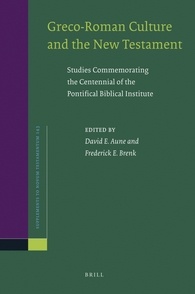
“The topic of chapter 3 is how human beings come to 'see the kingdom of God' (3:3) and 'enter into the kingdom of God' (3:5). The quick answer is that they must be (re)born from above (3:3) or born from the pneuma (3:8), and this is somehow connected with being 'born from water and pneuma' in baptism (3:5). Well and good. This captures the main content of 3:1-8. But when Nicodemus then asks (3;9) how that—presumably meaning 'being born from the pneuma' in 3:8—may come about, Jesus gives a very complex answer that basically speaks of two things: his own fate and its relevance for knowing the answer to Nicodemus' question (3:10-13) and the purpose of that fate with regard to human beings' coming to 'have eternal life' (3:14-16). The latter is then spelled out (3:17-21) in a way that makes it come out as being something that may be present here and now once the condition for it is fulfilled. In all this, what does John want his Jesus to say? What are the internal, logical connections between various parts of Jesus' speech?
Jesus' first point is that Nicodemus (even as a 'teacher of Israel') does not know (3:10) and cannot know since he does not even believe in anything Jesus might say about earthly matters (3:12). Jesus himself speaks of and witnesses to things that he knows and has seen (3:11) even though they be heavenly matters (3:12) since as the 'son of man' Jesus has himself descended from heaven. If we take the terms about 'seeing,' 'earthly matters' (ta epigeia), 'heavenly matters' (ta epourania) and 'heaven' (ouranos) literally and connect the idea of Jesus having descended from heaven with what this is all supposed to answer-namely, how one may become 'born from the pneuma'—we get the following picture: (1) Jesus has received the pneuma literally from heaven, which is it's natural abode; in that sense he, as the 'son of man,' has 'descended from heaven.' (2) Through the pneuma Jesus knows about heavenly matters; for he has seen them (through the pneuma). (3) Similarly (and this is the conclusion and the answer to Nicodemus), one can only 'see' the kingdom of God (which is in heaven or even 'enter' it if one becomes reborn by having the same experience with the pneuma that Jesus had. (4) And that happens in baptism.
So far, so good. However, at 3:14 Jesus' speech takes an unexpected turn. Here he talks of his own resurrection (as the 'son of man') and states as its purpose that it should generate 'faith (pistis), through which human beings will come to 'have' eternal life. This eternal life is then spelled out as something that is present here and now, presumably on earth.”
Greco-Roman Culture and the New Testament
David Edward Aune, Frederick Brenk, Brill Academic Pub, 2012, p. 39-40
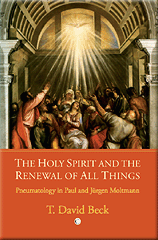
"Experience of the Spirit is of great importance to believers, and this is natural, if the Spirit is the source of new, eschatological life. However, experience of the Spirit must also take its place within a larger context. For every present encounter with the Spirit is one instant in a long history of pneumatic activity. Forgetting this point results in an overblown evaluation of the significance of experiences of the Spirit. It also results in those experiences losing much of their meaning. The Spirit encountered today is the same Spirit that spoke through the prophets, empowered Jesus and the apostles, and will someday bring about the complete transformation of all things. It is the eschatological Spirit. To experience the Spirit is to be drawn up into this pneumatic movement. Therefore, any experience of the Spirit must take its meaning from this larger historical context.” (Beck 2007, 237)
Cool Breeze (Wind) experiences of those born of the Spirit

“The result, in all three settings [Royal Albert Hall, local meeting or private house], is that many people do feel a cool breeze. The coolness which is felt is usually associated with other sensations as well. Typically, the pupils of the eyes can be observed to dilate and the person will feel very relaxed and 'centred.' However, it is notable that, despite the very similar ways in which individuals 'get their realisation'—and even in the same setting—not everybody feels exactly the same thing. Sri Mataji teaches that the vibrations of kundalini can be felt as cool breeze on the palm of the hands and above the head. Sometimes breezes, in line with the teachings, are felt on the hands and head specifically. For others, the experience is more generalized:
The experience was extremely timeless, because I felt that it only lasted for about five minutes but somebody came behind me and said 'would you like a cup of tea' and I thought, 'this is silly, what's all this about tea?; But it turned out that it was about three quarters of an hour later. And I felt a strong cool breeze. I was actually told; you will probably feel some coolness or some nice feelings inside' but I felt coolness not just in my hands, where I was told it would be, but all over and I felt incredibly peaceful.
Generally, the feeling of coolness on 'realisation' seems to be discernible, but relatively weak. As with Kakar's description of his own 'realisation', many newcomers are left with the feeling that they felt something but they are not sure what:
Mataji grandly announced, 'He is realised' ... 'Sit in meditation for some time' she told me as I sat up. 'Do you feel a cool breeze on the top of your head and on your palms?' Indeed I did, though I could not distinguish the coolness due to kundalini from the gutsy breeze coming in from the sea. I felt well, though, calm and deeply relaxed. (Kakar 1984, 195-6)
A few, however, have an extremely strong experience. One such incident was described by one of the participating Sahaja Yogis:
He felt really cool, not just on his hands but all over. He said: 'This isn't a breeze, it's a wind'. We all felt it really strongly too. Then we picked up Mother's photograph and held it in front of him and he felt loads of vibrations coming from that. But I think the whole thing was so strong that it frightened him. He was very high and positive for two days, he brought us some flowers, and then he became wary and never came to [the ashram] again.
Others still, in contrast, do not feel much, if anything, on their first session. This lack of feeling on their part, however, may not be shared by the Sahaja Yogis 'working on them', who may remark enthusiastically about how cool the individual feels, and may also be at odds with the view of Sri Mataji herself. Here is the description of his initial contact with Sahaja Yoga by one such follower. He first went to a meeting at which Sri Mataji gave 'realisation' en masse, but felt nothing. Nevertheless, he was persuaded to go to a smaller workshop a few days later.
I really didn't feel anything there at all either but I was told by Mataji herself-she said 'Who hasn't felt it yet?' and I put my hand up with a few others. Mataji said 'Come forward' and then she said to me 'You've got it, you know'. And I said 'Have I?' and she said 'Yes, go through to that room and ask some Sahaja Yogis to work on you'. So that was my introduction to Sahaja Yoga.
It was only with repeated sessions that he developed the ability to feel a cool breeze. There are also those, a few, who may feel more calm, possibly as a result of sitting quietly for some time, but otherwise feel no different and never feel any sort of breeze. This is often explained by Sahaja Yogis as being because the chakras have been too badly damaged by negativity in the past (Rajasekharan and Venkatesan 1992, 98).
Kakar (1984, 208), a trained Freudian psychologist, having witnessed Sri Mataji's delivery of 'realisation' both en masse and on a one-to-one basis, concluded that much of this experience is built on suggestion and 'hypnotic induction':
Needless to add, because of the emotional pressures created in a group setting, the tendency to identify with the experience of other group members and the intense desire to please the leader, only a handful of people hold out against this mass suggestion. (ibid., 209)
Such a conclusion would undoubtedly be rejected by a Sahaja Yogi, convinced that they have experienced their Spirit through the grace of Sri Mataji. It is not within the remit of my present enquiry, however, to seek to establish the 'real cause' of a cool breeze felt by an individual, but to try chart the social dynamics involved. Just as Goodman commented, in relation to religious experience:
The religious practitioners argue for it, either because it is part of their dogma, or because, as they affirm, they have 'been there', they have experienced it. The hard scientists take the opposite position, again as a matter of conviction. As social scientists, our situation is a happier one: at least we can state that, without any doubt, the alternate reality is a social one. (Goodman 1988, 43).”
Judith Coney, Sahaja Yoga
RoutledgeCurzon, 1999, pp. 55-58
Judith Coney is a lecturer in the Department of Study of Religions at the School of Oriental and African Studies, University of London. She published her book in 1999 but refrained from admitting, or at the very least briefly mentioning, the academically contentious eschatological significance of the "cool breeze” experienced by hundreds of thousands. After all, she did claim that Shri Mataji came to save as many souls as possible.
Unlike the Paraclete Shri Mataji since the 1970's till She passed away in 2011, the Sahaja Yoga organization has also never publicly admitted till today that the Cool Breeze is actually the Ruach or "pouring of His Spirit on all flesh" during the Resurrection.
As a result hundreds of thousands of seekers who felt the Cool Breeze over the decades were unconvinced by the standard and sanctioned subtle system, kundalni awakening, chakras opening energy explanation. The vast majority never came back. Judith Coney explains:
“Considerable time has been spent so far on exploring the experience of cool breezes in Sahaja Yoga. However, this is not necessarily because it is assumed that feeling a cool breeze is crucial to the decision to join Sahaja Yoga. In fact, as we have seen, comparatively few people who feel something actually do join, apparently unconvinced by the assurance of devotees that 'if you can feel it, it must be true'. Given the small number of people in 1994 who went to follow-up meetings after the Royal Albert Hall, it seems that even those who have fairly standard experiences of cool breeze are far more likely not to want to take the experience further than join.” (Judith 1999, 60)
“Cool breezes, then, are a central and prominent feature of most members' first encounter with Sahaja Yoga but do not, by themselves, usually precipitate the decision to join.” (Judith 1999, 62)
Without question the Spirit-Paraclete triggered the Cool Breeze (Ruach) of the Resurrection in thousands of seekers who neither knew or were told this: “In the last days, God says, 'I will pour out my Spirit upon all people.'" Acts 2:17
Spirit-Paraclete and experiencing the pneuma that validates authenticity of the decreed Resurrection
.jpg)
![]()
"Chi and ... Holy Spirit share many commonalities.” pneuma [Cool Breeze or Wind] is the peculiar power ... of eternal life.”
“At the end of history Spirit of God will become effective in a special way.”
“However, in the new age, the Spirit rests on all followers of the Messiah."
Resurrection "comes about through Yahweh's ruach.”
“The breath blows across the sky of the Tenth Gate and vibrates.” SGGS
“This book is my attempt ... for the '“The Cool Breeze coming out of your head, that's called as Chaitanya Lahari, that's called Cool Breeze of the Holy Ghost. When John the Baptist talked about baptism, he meant this. He didn't mean the way we do baptism, to just call somebody, put some water on the head, and say 'Oh, you're baptized. That's just a drama. Baptism is a living process.”
The Messiah-Paraclete-Ruh-Devi
Truth to be Achieved, Brighton, U.K.—7 October 1982
“When discussing eschatology, Moltmann never considers Christ as the agent for the fulfillment of the future, but rather the Spirit. It is the Spirit who brings about the kingdom of God as a historical reality.” (Varkey 2011 Kindle 4742)
"Pannenberg argues that the New Testament statements about the Spirit and its work should be understood in the light of the Jewish view. In the Jewish understanding, ruah is described as a mysteriously invisible natural force which declares itself especially in the movement of the wind. This is the background of the statement in John that the pneuma is like the wind that blows where it wills, and we hear its sound but do not know where it comes and where it goes.” (Varkey 2011 Kindle 12550)
“The Cool Breeze is all around us and we can start feeling in our hands when the Kundalini emerges from the top of the head if our Vishuddhi is alright. This is what Christ meant by 'to be born again' and not just to call some people and say 'Alright, now we have some baptism.'"
The Messiah-Paraclete-Ruh-Devi
We don't have to suffer, Bedford, U.K.—8 October 1982
“The experience of the divine Spirit as an energy and vital power goes back to the Hebrew ruach concept. This experience of the Spirit does not release those who are touched by it from this earth and their own earthly bodies, so that their souls can soar into the realms of spirits. It fills them with a new vitality entirely and wholly, body and soul. We sense in ourselves the personal dynamic given to us, and then perceive it in everything else that lives.” (Moltmann 2014 Kindle Locations 3647)
1. The Time of Resurrection
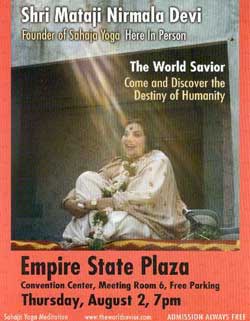
“The Kingdom of God that we were promised is at hand. This is not a phrase out of a sermon or a lecture, but it is the actualization of the experience of the highest Truth which is Absolute, now manifesting itself in ordinary people at this present moment.”
The Messiah-Paraclete-Ruh-Devi
"Tell all the nations and tell all the people all over the Great Message that the Time of Resurrection is here. Now, at this time, and that you are capable of doing it.”
The Messiah ... (continue)
2. Christ and the Kundalini
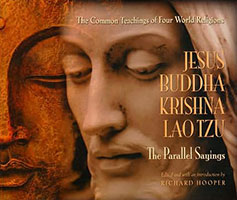
“The Christian Gnostics practiced a spirituality more similar to Eastern traditions than to the Western Christianity we know today. 'Gnostic' is Greek for 'knower' and it is 'Gnosis' or 'Knowledge' that they were seeking. Unlike the blind faith demanded by today's Churches, 'Gnosis' meant direct, mystical experience of the divine, which was to be found by individual spiritual evolution to Self-Realisation, and not within the confines of intellectual dogma. ... (continue)

"Shri Mataji claims to be able to fully awaken the kundalini of others almost instantly. The process traditionally involves strenuous efforts, is difficult and is only achieved after many years of practice (Krishna, 1971). The speed she offers is possible, she says, because she is the Adi Shakti (Sajaja Yoga 1988, 8). Once awakened, either by Shri Mataji or her followers, the kundalini rises through the chakras until it pierces the topmost chakra, the Sahastra, and emerges at the fontanel area at the top of the head. During its ascent, the individual may feel tremendous heat. This, says Shri Mataji, is due to the kundalini burning off impurities in the chakras as it ... (continue)
.jpg)
The Paraclete Shri Mataji 4. Question: “Which will be the end of all the world or of humankind?”
“Which will be the end of world? Again, futuristic, very futuristic. Let's not talk about the end. Just now is the beginning. When the child is born we just don't think about his death, do we?
So better be worried about the beginning of this new world that we have started and don't think of the death and all those things. Forget it ... (continue)
5. The Breath of God in the Old and New Testament
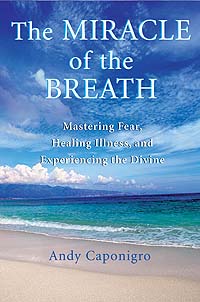
“The link between Spirit and Breath is mentioned throughout the Bible, yet most modern-day Jews and Christians are unaware of this relationship. For example, the ancient Hebrew word ruah not only meant 'spirit,' 'breath,' and 'wind'; it was also used in essentially the same ways as the Greeks, Hindus, and Romans used the words pneuma, prana and spiritus. The ancient Hebrew scribes often linked the word ruah with Yahweh (the name of the God of Israel). Thus, the term ruah Yahweh, which appears often in the Old Testament, can be translated to mean 'the spirit of God,' 'the breath of God,' or 'the wind of God' (God's breath manifested as wind). In the New Testament, all references ... (continue)
6. Concepts in other cultures that correlate with Qi
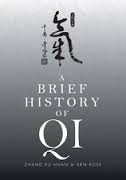
“The ancient Hindus wrote of prana, the invisible 'breath of life' that they cultivated through Yoga. Ancient Greeks described a concept which in several important aspects parallels the Chinese notion of qi with the word 'pneuma.' Like the Chinese qi, this Greek word is often translated into English as 'breath'— with similar misleading results. The Greek pneuma, like the Chinese concept of qi, was a complex idea that blended spiritual and material aspects of the vital essence of life into a comprehensive description of that without which life itself could not exist...
Also like qi .... (continue)
7. Qi: “When it goes into man's chest, the man becomes a sage"
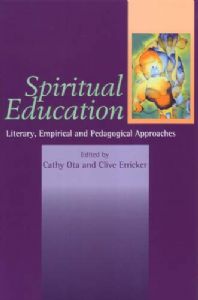
“What, if any, are the equivalent Chinese terms for 'spirit' and 'spirituality'? A brief consideration of this question provides some helpful background for understanding how the spiritual dimension of human life is conceptualized and expressed by the Chinese.
Etymologically, in Chinese 'it is probably qi that bears the closest resemblance to 'spirit' (Adler 1997). A simple comparison shows the basis for this judgment. According to Barnhart, 'The original English use of spirit are mainly derived from passages in the Vulgate, in which Latin spiritus is used to translate Greek pneuma and Herbrew ruah' (1999; 1047). Holl gives the original meaning ... (continue)
8. "Chi serves as the mysterious bridge between God and humanity.”

"Chi and the Christian understanding of the Holy Spirit share many commonalities. The Old Testament ruach and the New Testament pneuma carry the same ambiguity of multiple meanings, as does Chi, such as 'breath, air, wind or soul.' The word ruach has its etymological origin in air, which manifests itself in two distinctive forms; that of wind in nature and that of breath in living things. Because God as Spirit manifests herself as wind, or ruach, she is also Chi...
The cosmic dimension of Spirit is expressed in the idea of Chi, the vital energy which is the animating power and essence ... (continue)
9. Hunbatz Men, Secrets of Mayan Science/Religion

“I think it is important to mention again the other ancient cultures, like those of India, where we find roots of words similar to peninsular Mayan. Valmiki wrote that the Naga Maya brought their culture to India around 2700 B.C., although we believe it was even earlier. We also maintain that they brought their culture to other parts of Asia and to Africa, where they were called Mayax according to Manetho, the Egyptian priest-historian.
There are notable similarities between Indian culture and the cultures of the Maya of Yucatan and other indigenous people of America, especially in esoterica. ... (continue)
10. Question: “Is the Kundalini the same force that exists all around us as the Chinese call Chi?”
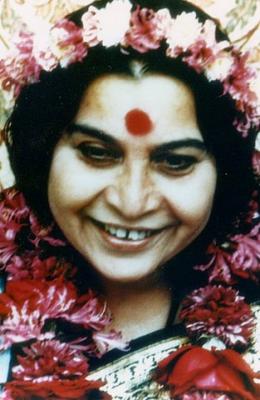
Lao-Tse is the man who talked about this thing, He's the one who told them about Kundalini and they don't know who is Lao-Tse. Especially in America, I don't know what sort of Chinese live here.
It's such a great source of knowledge, and what they have said is a perfect thing.
But everything gets integrated in Sahaja Yoga. All the knowledge, all the scriptures, everything gets integrated. Absolutely integrated because out of light you see the truth in all of them. ... (continue)
11. Question: “In your discourse you refer to the Kundalini as 'she'. Is that because you are a woman?”
.jpg)
The Messiah-Paraclete-Ruh-Devi
Radio interview, Santa Cruz, USA, 1983
“In concert with Bultmann's emphasis on revelation, some scholars have argued that the Paraclete is John's vehicle for assuring his readers that either Jesus' own words were not forgotten (14:26) ... (continue)
12. The True Meaning of Yoga and Sadhana

The Times of India
Yogi Ashwini Ji, Dec 21, 2004
The guru, through shaktipath, initiates a person on the path of sadhana. The process requires immense energy, which is transferred from guru to shishya. If this energy is channelised towards people who have no value for it, the energy dissipates. That is why it is said that knowledge or 'gyan' should not be distributed before people who don't value it. This can also be said for people who come to listen ... (continue)
13. The Fountain of Immortality that resides and rises from the coccyx (Luz, 'ajbu adh-dhanab', Mooladhara) during the Resurrection: Meditate to experience it daily as the Cool Breeze (Pneuma, Riah Al-Qiyamah, Prana, Qi) of the Holy Spirit (Ruach Elohim, Divine Mother, Tao, Devi, Kukulkan, Paraclete, al-Ruh)
“What is Kundalini really? More commonly known in western cultures as Holy Spirit, Kundalini is the ancient Sanskrit name for the primal life force that animates all living entities—the evolutionary force behind all living matter.... Shaktipat is a Sanskrit word for the process of activating the higher Kundalini-Shakti energy, initiating the ... (continue)
14. “It is a living process and a living process of a living God!"
.jpg)
The Paraclete Shri Mataji “So to feel that All-Pervading Power the thing lacking in us is that we have not felt so far the connection, and this connection has to be established — that is possible. Built within us is the Power, what we call Kundalini, which is coiled three and a half, and which rises through six centres to pierce through your fontanel bone area, and you start feeling the cool breeze (Ruach/Pneuma/Qi/Prana/Riah Al-Qiyamah) in your hand. And also the cool breeze starts coming out of your head so you have to certify yourself. Nobody is going to certify you!
This is the first sprouting of the seed. It is a living process and a living process of a living God! It sprouts ... (continue)
15. “Jesus was talking to Nicodemus about a new beginning, a fresh start, and a chance to become a new person by entering into a life-changing, personal relationship with God.”
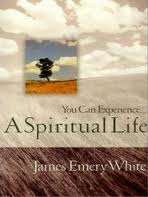
“The search of Nicodemus is the search of many people in the world: a spiritual search for ultimate answers to life's questions. And like many people, Nicodemus is drawn to Jesus. Though he is not sure who Jesus is, he knows that Jesus is a man who comes from God, recognizing that God is in Jesus in a way distinct from other men. So he goes to Jesus—at night—because he's not quite ready to let just anybody know what's going on inside of him.
When Nicodemus gets there, he opens up the conversation by telling Jesus, 'There's something about you ... (continue)
16. The Paraclete: “They are authorized to give spontaneous awakening"

The Paraclete Shri Mataji “Actually, Kundalini is your beloved Mother and you are Her dearest, only child. She loves you more than anything else in the universe and is interested only in giving you the supreme Joy through your second birth. She is born again and again with you and resides in your Mooladhara, the triangular bone of your sacrum (the coccyx). She records your problems and waits till the subject meets a realized soul as guru or a Sahaja Yogi. They are authorized to give spontaneous awakening.”*
The Paraclete Shri Mataji
*At this site it is your own Spirit-Paraclete or Divine Mother or Holy Spirit within (not Shri Mataji) who directly gives the spontaneous awakening ... (continue)

You may download this pdf file which has the same detailed instructions #1-9 below for self-baptism (Self-realization or kundalini awakening) and meditation. You may want to print this file and use it for regular meditation. Please follow these steps daily till you feel the cool breeze (Ruach) on your palms and top of your fontanalle. On rare occasions, if cool breeze (Ruach) cannot be felt even after a few weeks then it is advisable to go to a Sahaja Yoga center where Shri Mataji's disciples will clear any chakra blockages. This free, unconditional service fulfills a 2000-year promise of Spirit-rebirth by disciples of the Paraclete: “Jesus solemnly assures the disciples that they will, in the future, perform even greater miracles than He. By this He means to say that through the power of the Holy Spirit, they will bring about the greatest miracle of all - the salvation of lost souls.” (Stallings, Picirilli 1985, 205)
In order to successfully carry out this self-discovered, self-contained and self-sustaining initial experiment and, subsequently, a life-long experience of being 'born of the Spirit'/Kundalini Awakening, please follow the instructions below. One is assured of the spontaneous awakening—provided one genuinely believes and desires the promised second birth for all humanity during this Last Judgment and Resurrection—that one's own, individual Mother wants to bestow upon Her child. This awakening, directly from the Spirit-Paraclete within, is guaranteed to be most gentle and without any side-effects whatsoever. This guarantee is attested by hundreds of thousands of seekers who have had their kundalinis awakened by the Divine Mother/baptized by the Holy Spirit over the decades:
1. Sit comfortably on a chair.
2. Take off your shoes so as to have a better contact with the earth.
3. Please familiarize with instructions 1-9 on where the right hand is to be placed on various parts of the body. The initial success and experience depends on your sincerity and pure desire i.e., you want to take part in the Resurrection and Last Judgment, the salvation and eternal life that Jesus promised will be initiated through the Spirit-Paraclete within. The sequence of self-affirmations are designed to confirm that knowledge, free will and desire. “It has shown that revelation—the communication by God to man of that which initially only God can know—takes place, if at all, by contact between God and man on the level of that aspect of a human personality that may be called spirit. Yet also it has shown that there is a certain independence attributed to man. God's Spirit is not forced upon him. He has the capacity for choice.” (Moule 2000, 7-8) If you are not ready or do not agree for whatever reason you have that choice; please do not to continue, and perhaps return when you are.

You may use the term “Divine Mother",” Mother Kundalini" (Kukulkan),” Holy Spirit/Spirit-Paraclete” (Christians),” Adi Shakti/ Durga/ Maa/ Devi/ Amma” (Hindus),” Ruh Allah" (Muslims),” Shekinah/Ruach Elohim" (Jews),” Prajnaparamita/Tara” (Buddhists),” Aykaa Mayee” (Sikhs),” Tao/Wu Chi" (Taoists),” Thian" (Confucian), or just"God"or"Divine Mother“In any language you are comfortable with.
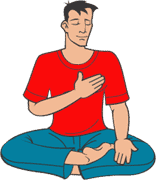
1. Put your right hand on your heart and silently in your heart ask the following question 3 times:
" (.............), am I the spirit?”
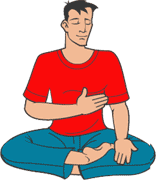
2. Putting your right hand on the upper part of your abdomen on the left-hand side of your body, silently ask the following question 3 times:
(.............), am I my own master?

3. Put your right hand on the lower part of your abdomen, on the left-hand side of your body, and ask the following question 6 times:
(.............), please give me the Pure Knowledge.

4. Put your right hand again on the upper part of your abdomen on the left-hand side of your body, and silently affirm the following phrase 10 times:
(.............), I am my own master!

5. Putting your right hand again on your heart on the left-hand side of your body, silently affirm the following phrase 12 times with confidence:
(.............), I am the spirit!
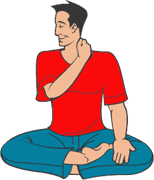
6. Now place your right hand on the left-hand side of your neck, where it joins the shoulder, and turn to your right. In order to free this centre, it is necessary to get rid of all feelings of guilt. Repeat the following phrase 16 times with conviction:
(.............), I am not guilty at all!

7. Put your right hand on your forehead and lightly press the temples. Here it is necessary to forgive in order to liberate this chakra from whatever may be blocking it. Silently, and with sincerity, say the following phrase several times:
(.............), I forgive everyone in general!

8. Put your right hand on the back of your head, put your head back, and this time ask for forgiveness for all the mistakes that you have ever committed, but without feeling guilty. Repeat the following phrase several times:
(.............), if I have done anything wrong knowingly or unknowingly, please forgive me!

9. Now close your eyes and put the center of your right palm on top of your head, spread out your fingers and press hard with the palm of the hand. Gently massage the scalp in a clockwise movement and, with humility, ask 7 times:
(.............), please give me my Self-Realization (Second Birth/ Kundalini Awakening).
Put your hand down, meditate and remain in silence for a few minutes, with your attention still on the Holy Spirit/ Spirit-Paraclete / Divine Mother within.
(Please follow these steps daily till you feel the cool breeze on your palm and top of your fontanalle)
17. Daily Meditation
After Self-realization meditate twice daily on the Divine Feminine within yourself and begin purifying your mind, body and soul. That is all it takes to participate in the Last Judgment and Resurrection, the promised evolution of humans into the eternal spirit and everlasting life as promised by each and every religion and holy scripture. Above all, it (eternal life through the Resurrection) was repeatedly promised and finally demonstrated by Jesus Christ after His crucifixion, a promise now delivered and fulfilled through the Paraclete sent in His name by God Almighty.
Over a sustained period of daily meditation the Divine Wind will slowly begin to ... (continue)
18. Important Reminder
Daily meditation—the innermost intimacy with the Divine (Silence on Self) in the Sahasrara (Kingdom of God)—and experiencing the Divine Wind is key to participating in the Last Judgment and Resurrection. There is absolutely no need for any existing religious rule, ritual or ruler. Please do not corrupt its purity and sacredness with any human innovation. His Holy Spirit within will perfect you for the eternal afterlife. You will bear witness to your own resurrection and your own Spirit/Self. The spiritual journey within oneself must thus never ever be contaminated by human novelties or religious doctrine! The only guide you will ever need is the Divine Mother/Holy Spirit/Devi within, the Source of Consciousness.
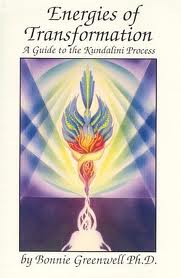
"'When in consequence of the advent of pure knowledge the jiva discards its limitations, then freed from every shackle it becomes illuminated.'
Although the boon of illumination is appealing to Westerners, they have many defenses against burning away ego attachments, and it is a major upheaval of consciousness to discover that many of the former interests and involvements of life have become irrelevant. There is a tendency to avoid serious consideration of the demands for change instigated by a spiritual life and to hope that 'enlightenment' is all accomplished in some nice, neat, and ... (continue)
19. “Jesus had limited what He told the disciples because of their inability to understand"
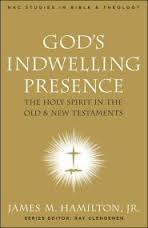
“In 14:26, Jesus says,” But the Paraclete, the Holy Spirit, whom the Father will send in my name, will teach you all things and will remind you of all that I myself spoke to you.” (14:26). The teaching ministry of the Paraclete is presented as superior to that of Jesus because the Paraclete will teach them “All things" and will remind them of "everything" that Jesus said (14:26). The Paraclete's ministry is set clearly in the future. Jesus again identifies this “Paraclete” with the Holy Spirit, whom the disciples would know from the Old Testament (Ps. 51:11; Is. 63:10,11): “But the Paraclete, the Holy Spirit—the Father will send in My name” (14:26). This sending will fulfill ... (continue)
20. The Gospel of Thomas

The Paraclete Shri Mataji “Actually, thank God they have found out now the book written by Thomas who has described Gnostic way of life, where gnya means 'to know.' In Sanskrit language, gnya means 'to know,' gnya. So he has described very nicely the gnostic life. This was the Gnostic Bible, or whatever we call it, saying about a personal experience of achieving God realization, Self-realization (baptism). It talks about Sahaja Yoga (spontaneous* salvation*) out and out.”
The Messiah-Paraclete-Ruh-Devi
Christmas Puja
Pune, India—December 25, 1987
... (continue)
21. “The preachings of religion make a person dependent on priests, temples, idols, blind faith, and dogma"

“The Upanishadic literature is not a religious scripture and is free from dogma and doctrines. It is not a part of any religion but is a philosophy for all times and for all. This philosophy does not oppose any school of thought, religion, or interpretation of the scriptures, but its methods for explaining its concepts are unique. The Upanishads should not be confused with the religious books of the East; there is a vast difference between the philosophy of the Upanishads and the preachings of any of the religious scriptures of the world. In religion and religious books, there is little practicality and much theory. One is not supposed to interpret religious sayings ... (continue)
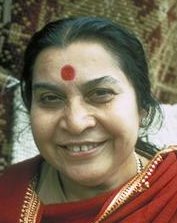
“The Self is the Spirit. This Spirit resides in the heart of every human being and is in a witness-like state. The Spirit is the projection of God Almighty, while the Kundalini is the projection of the power of God, of His desire which is the Primordial Mother, or you can call it Adi Shakti, Holy Ghost or Athena.
So the Kundalini is the projection of the Holy Ghost, while the Spirit is the projection of God Almighty. The All-pervading Power of love is the power of the Primordial Mother, which creates and evolves, and does all the living work.”
... (continue)
Disclaimer: Our material may be copied, printed and distributed by referring to this site. This site also contains copyrighted material the use of which has not always been specifically authorized by the copyright owner. We are making such material available to our readers under the education and research provisions of "fair use" in an effort to advance freedom of inquiry for a better understanding of religious, spiritual and inter-faith issues. The material on this site is distributed without profit. If you wish to use copyrighted material for purposes other than "fair use" you must request permission from the copyright owner.